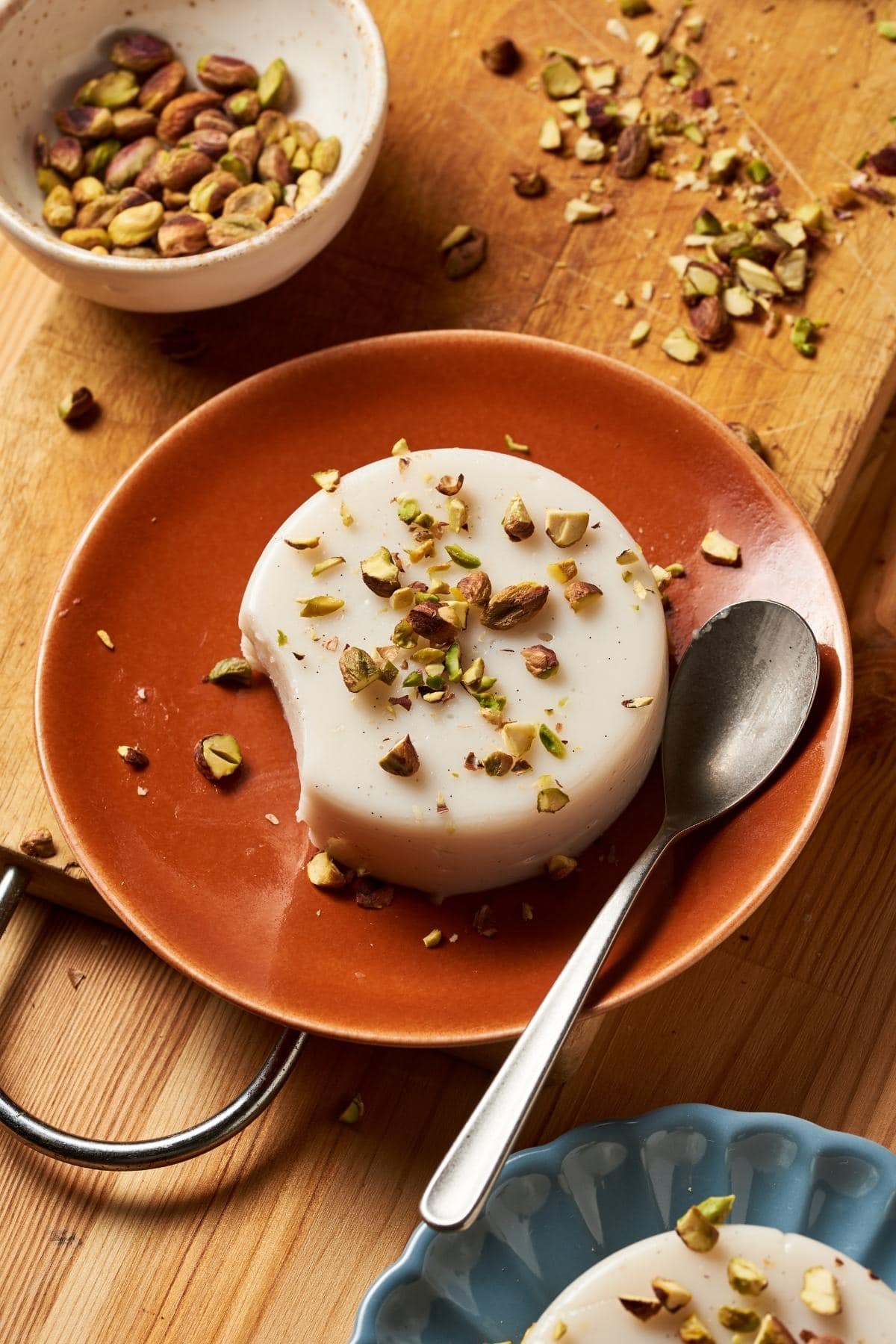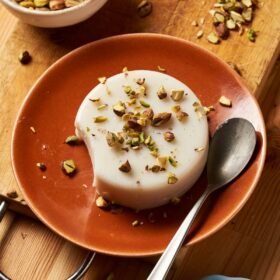Biancomangiare is an Italian almond milk pudding spoon dessert that is white in color, with a texture so soft that it melts in your mouth. You can eat it for breakfast, as a snack accompanied by cookies or after dinner as a dessert. This almond milk pudding is easy to make at home because it calls for just a few ingredients and you can make it in no time flat!
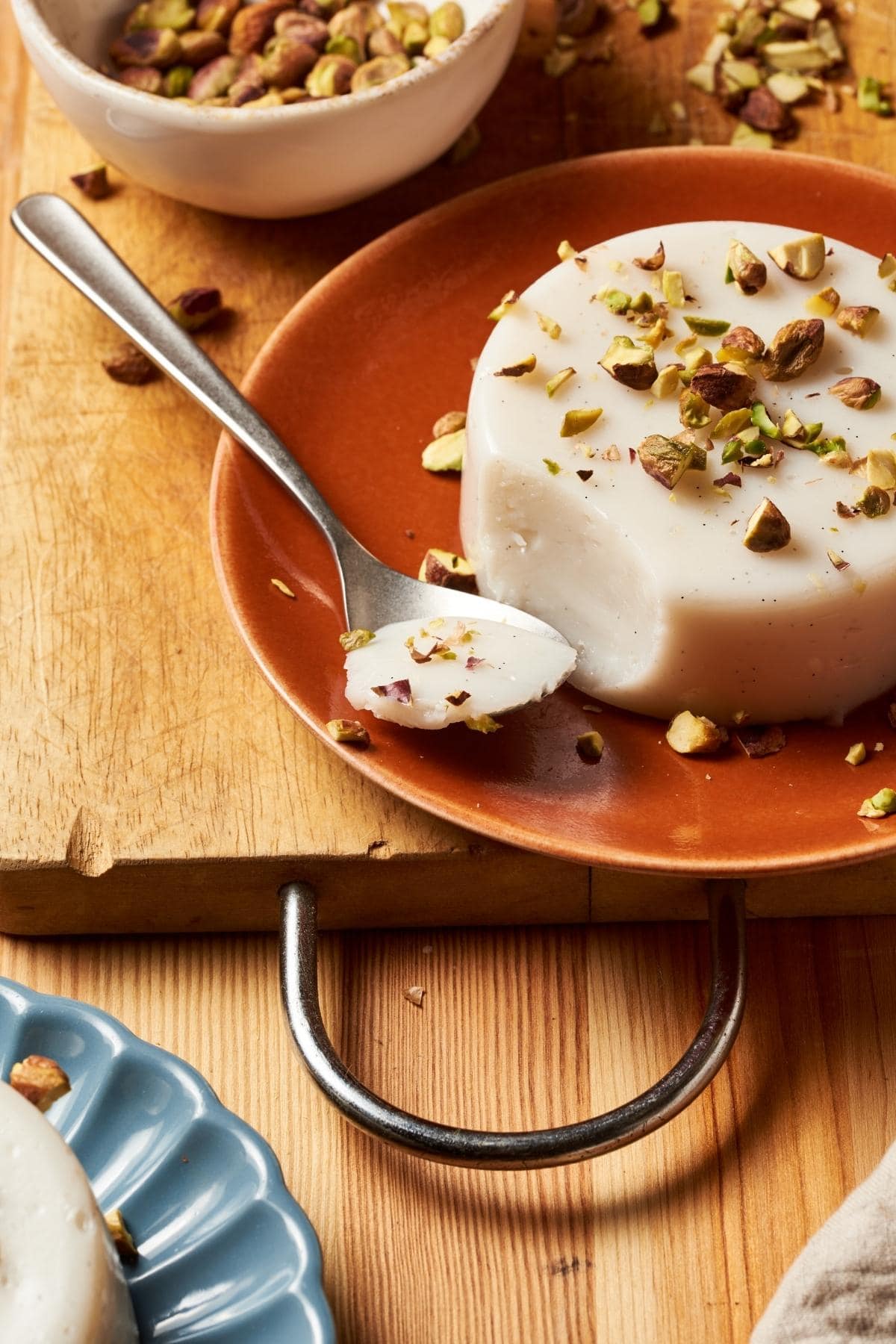
The original biancomangiare recipe is from Sicily, where there are lots of regional variations. Some recipes include soaked almonds, others almond milk, and still others cow or sheep milk.
You can also have fun adding flavors you like, just like Italians do, with a dash of lemon zest, some chopped pistachios, or even some edible jasmin flowers or cinnamon blossoms sprinkled on top.
Here are the few ingredients you will need to create this almond milk pudding at home:
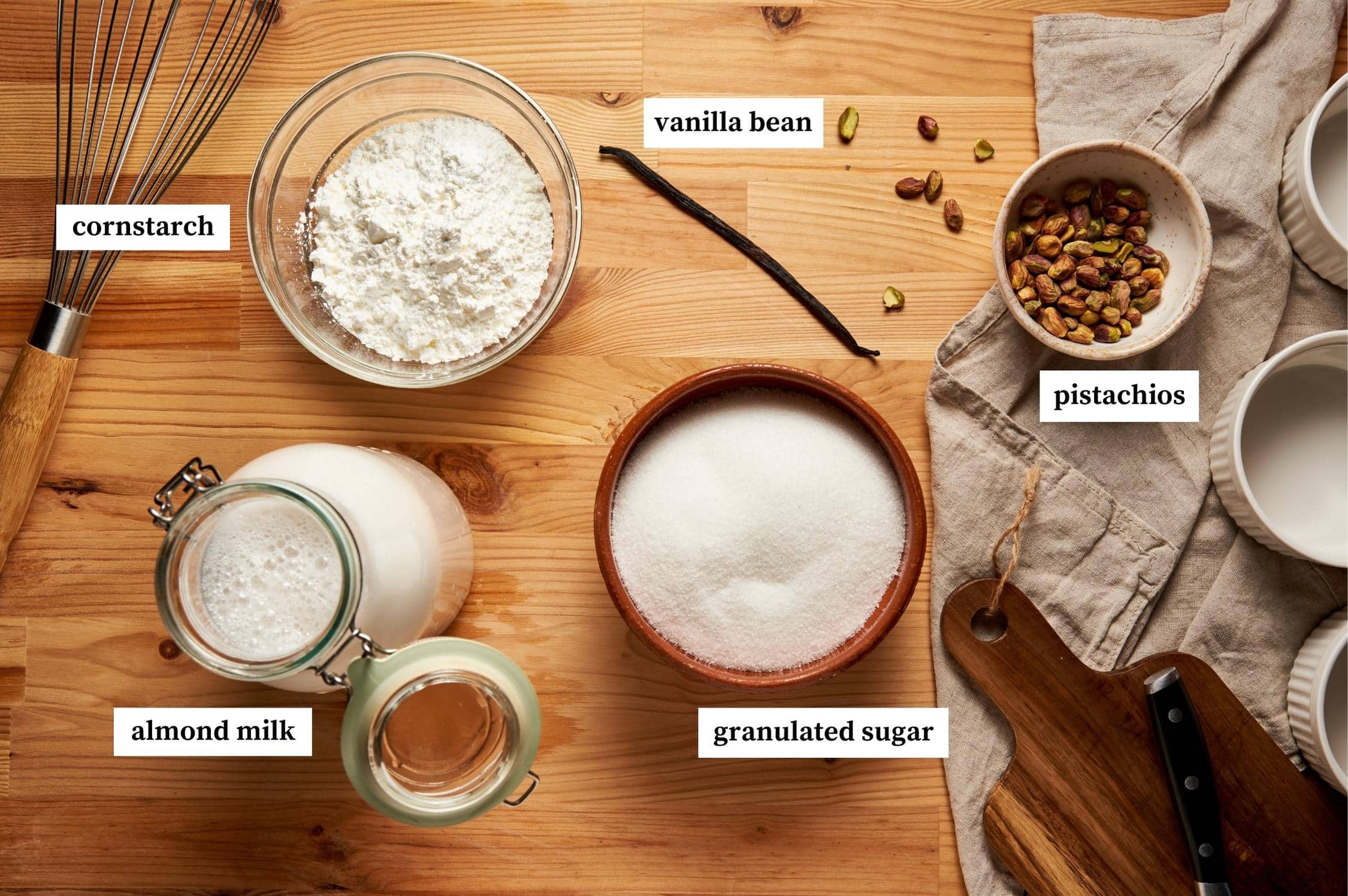
Make the pudding: In a small pot, sift the sugar and the cornstarch together and mix (photo 1). Cut open the vanilla bean pod and scrape out the seeds (photo 2).
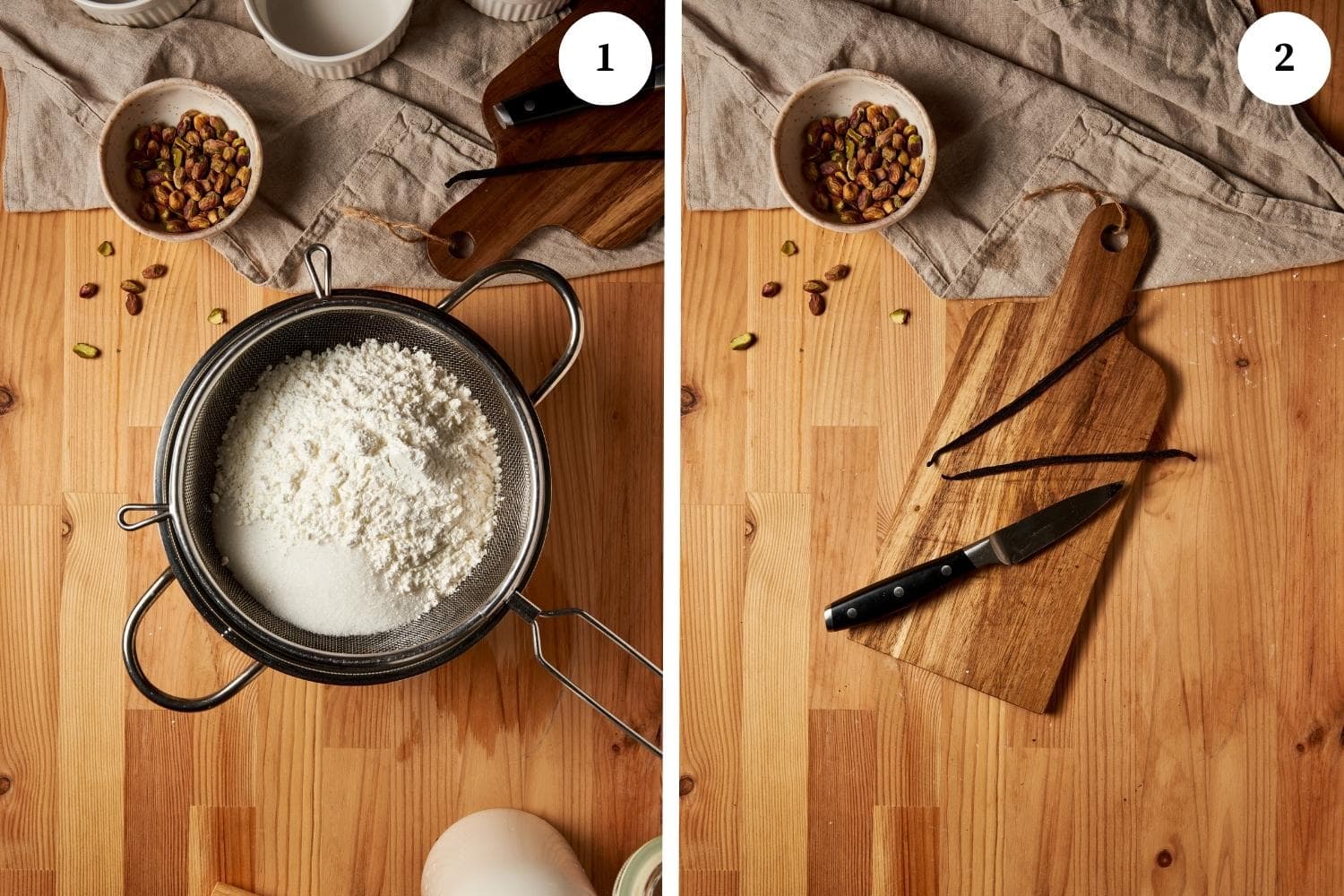
Add the vanilla seeds to the sugar and cornstarch in the pot. Add the almond milk and mix very well, making sure there are no lumps. Place the pot on the stove over low heat, mixing with a whisk until it boils.
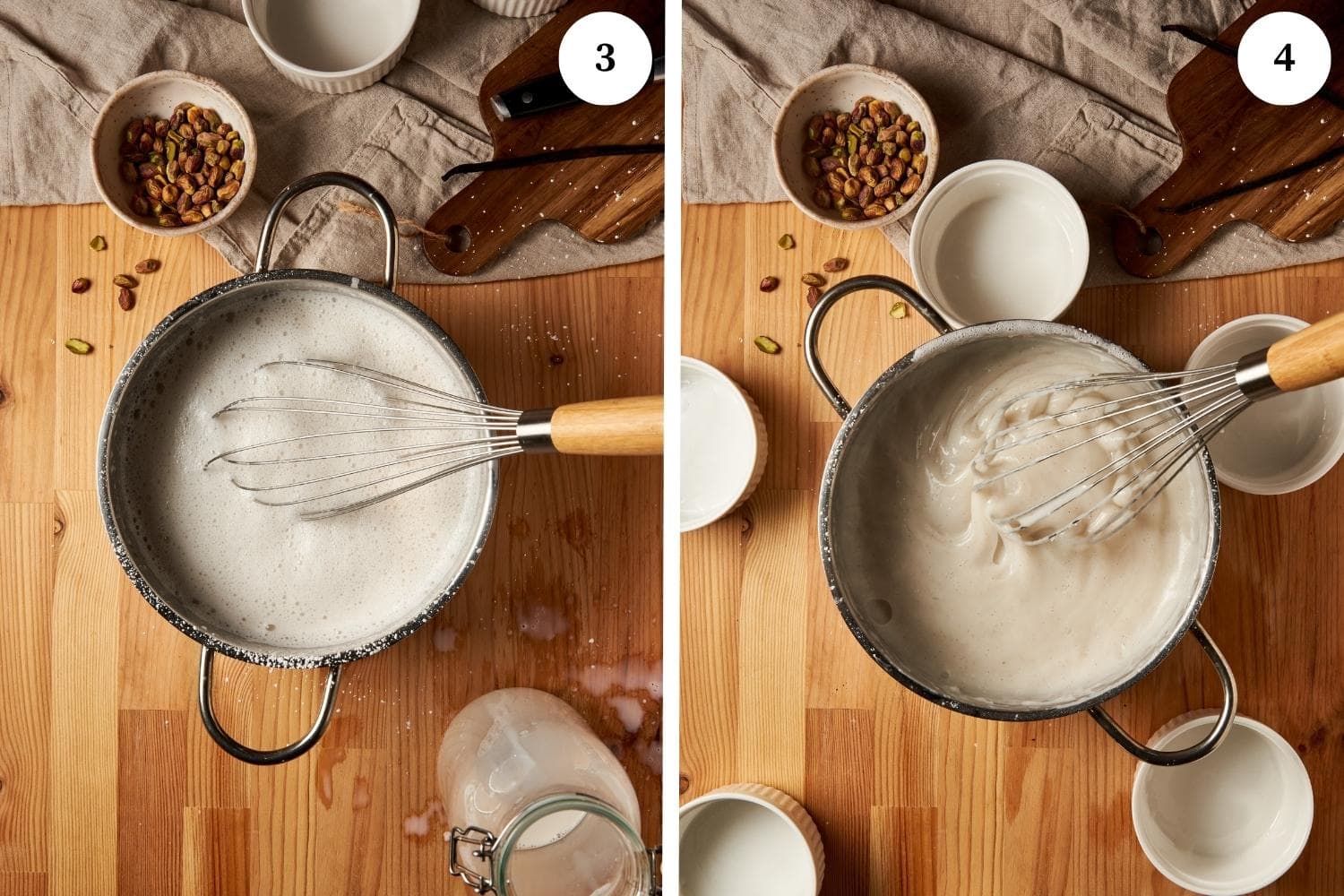
Pour into molds and chill: Remove it from the heat, mix quickly, and then pour the mixture into six small molds previously dampened by cold water (photo 5). Place in the fridge for 5 hours.
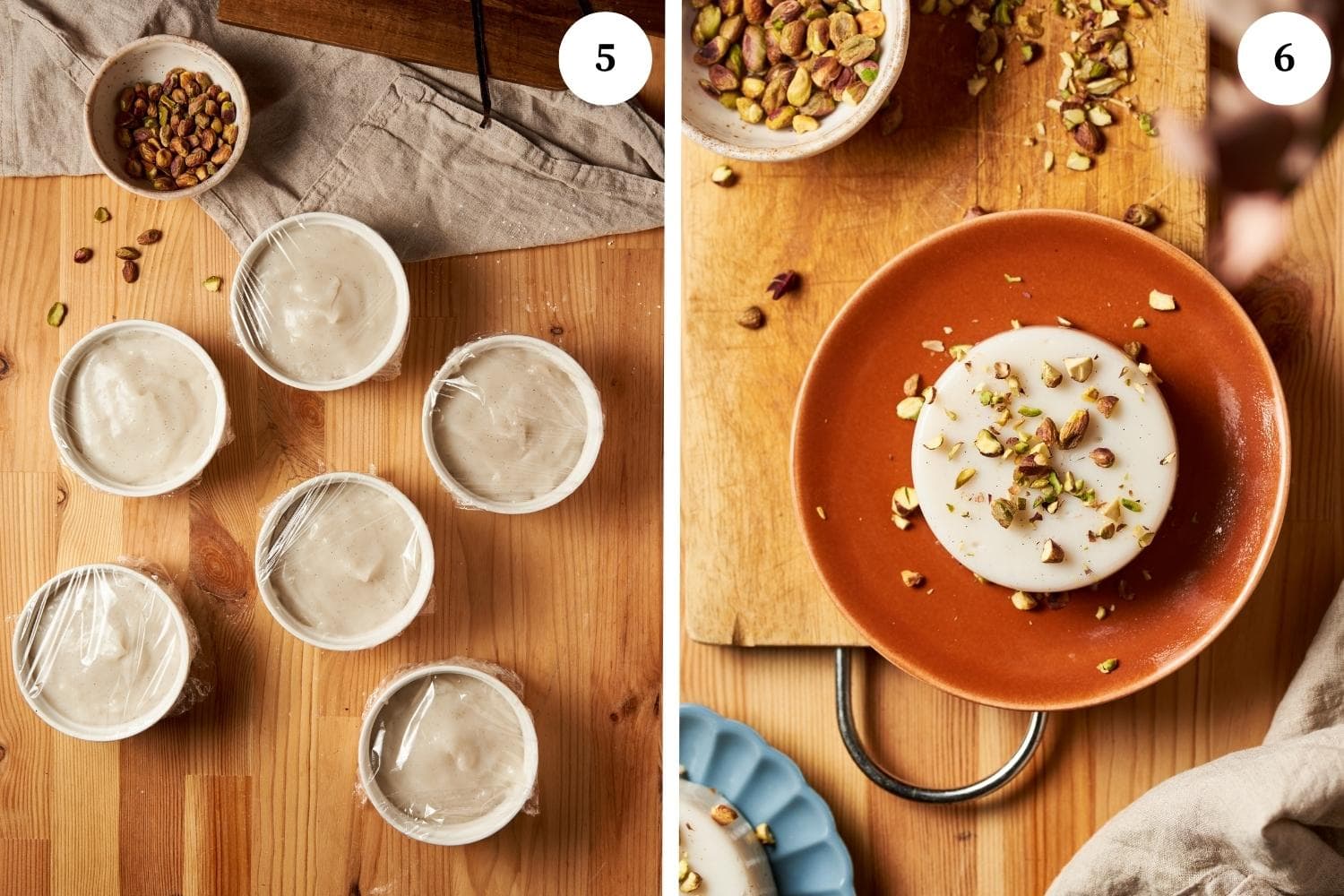
Decorate and serve: Flip each mold onto a dessert plate and decorate the top with a handful of crushed or chopped pistachios (photo 6).
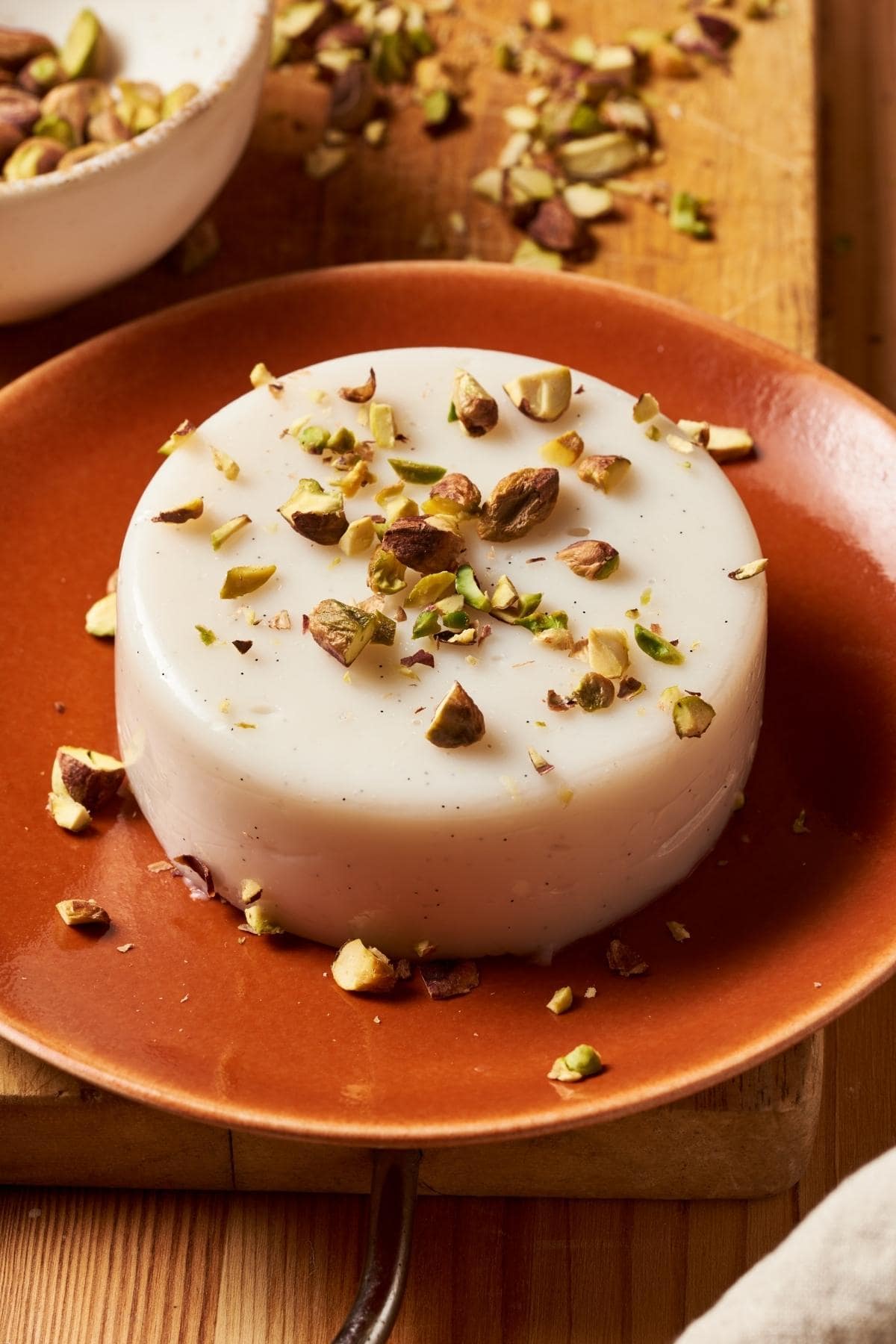
Other dessert recipes to try:
Biancomangiare Sicilian almond milk pudding can be kept in the fridge for up to 3 days if it is covered with plastic wrap. Leave it in the dessert molds and flip out onto a plate and decorate with pistachios only right before serving.
The combined delicateness of milk and the slight aroma of almonds means that biancomangiare almond milk pudding goes perfectly with some of the best Sicilian dessert wines. Once harvested, the grapes for these wines are left to dry for a few weeks on special racks in order to concentrate the sugars. The most famous is Passito of Pantelleria, a wine with aromas of candied fruit, fig jam, and apricot.
Biancomangiare is a sort of cousin to panna cotta. The main difference between the two is that panna cotta uses cream and then gelatin to thicken it and biancomangiare uses almond milk and then cornstarch to thicken it. The preparation methods used in cooking both desserts are very similar, especially in modern times, but they come from different places and backgrounds.
The name “Biancomangiare” was first used in the Middle Ages for a dish characterized by the presence of white ingredients, considered a symbol of purity. It was intended for the rich and could be found both sweet and salty. Milk, lard, almonds, rice, sugar, etc. were used to prepare it — all strictly white ingredients. It is believed to have originated in France: many texts report the name blanc manger, but its diffusion in Italy took place around the 11th century.
Over time, this dish has turned into a widely recognized dessert, which is now part of the traditional agri-food products (PAT) of three Italian regions: Sicily, Sardinia, and Valle d’Aosta.
